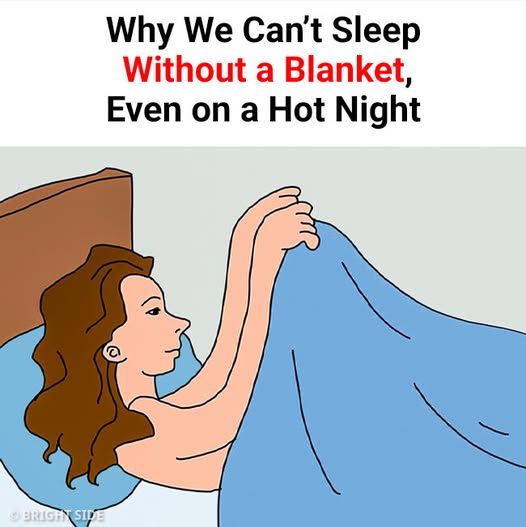💤 Reason why

Even when it’s warm, many of us instinctively reach for a blanket at bedtime. This isn’t just habit — it’s a result of how our bodies and brains work:
1. 🧠 Psychological Comfort & Security (The “Cocoon Effect”)
Blankets provide a sense of safety and comfort. Being covered can:
- Make us feel protected and less vulnerable, especially when sleeping.
- Trigger a calming response in the brain (similar to how babies are swaddled).
- Help reduce anxiety by creating a sense of containment and boundaries.
This mental comfort is so powerful that even in heat, we often keep at least a thin layer over us.
2. 🌡️ Thermoregulation (Body Temperature Control)
When we sleep, our body temperature naturally drops. This drop signals our body that it’s time to rest.
- Even in warm weather, your core temperature drops at night.
- A blanket helps retain that heat so your body doesn’t feel too cold, especially during the early morning hours when the temperature dips.
- Without a blanket, your body might wake up or stay restless trying to stay warm.
3. ⏰ Sleep Cycle Support
Blankets help maintain a stable sleep cycle by:
- Helping your body stay in a restful state.
- Supporting the circadian rhythm, which is tied to body temperature.
When your body is too exposed, it might disrupt deep sleep stages like REM.
4. 🧬 Conditioned Behavior / Habit
From childhood, most of us were tucked in to sleep. Over time, this becomes:
- A conditioned response — we associate being under a blanket with sleep.
- So without it, the brain doesn’t feel like it’s time to rest, even if the room is hot.
5. 😴 Weighted Comfort (Even Light Pressure)
Light pressure from a blanket can have a soothing, grounding effect:
- Similar to how weighted blankets are used to ease stress or insomnia.
- It helps reduce movement during sleep and creates a feeling of stillness.
✅ So, Even on a Hot Night…
Most people will still:
- Use a thin sheet or light blanket.
- Cover at least part of their body (like the legs or torso).
It’s your brain and body’s way of saying: “I need comfort, security, and sleep signals.”